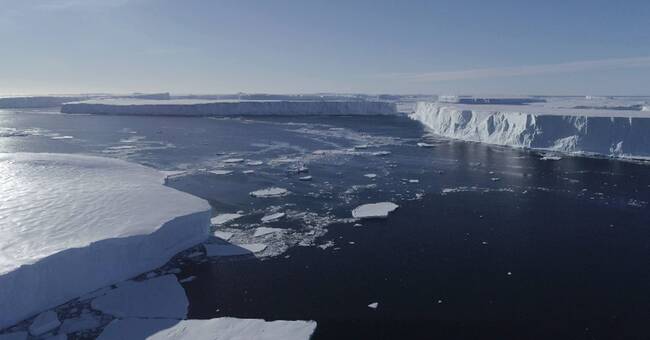Ted Scambos is one of the few people on earth who set foot on the Thwaites Glacier.
He is a glacier researcher at the Colorado National Snow and Ice Data Center and has studied Antarctica for decades.
The last time he was there, he discovered something very disturbing.
- The air is very clear in Antarctica, so you see very far.
As I looked at the wall of ice behind me, I suddenly saw all the cracks.
It was deeply uncomfortable, I really felt how the mass of ice was about to slide out into the sea.
Binds 90 percent of all fresh water
Antarctic ice covers almost 90 percent of all freshwater in the world.
The combination of both warmer seas and winds has meant that they have now begun to melt.
If all frozen fresh water melts, the sea level will rise by 60 meters, even if it would take several hundred years.
The melting of the Thwaites Glacier, or Doomsday Glacier as it is also called, has gained momentum over the past 20 years.
Ted Scambos is convinced that it is at the beginning of a turning point.
Scientists fear that it will slowly slide into the sea and break.
The weakness with Scambos and other researchers' results is that they have relatively short measurement periods.
But he believes that the trend is clear, and that the sea around Antarctica is warming.
- The combination of what we understand from our computer simulations, studies of ice cores and how we have seen the ice change over the past 50 years gives us a good idea of what is happening - good enough to motivate us to act.
New insights create hope for more time
A new study nuances the picture of when dangerous breakpoints occur.
It shows that different climate systems reach their threshold effects at different temperatures.
If global warming slows down, several climate systems that are close to a threshold effect can "calm down" and the worst consequences can be avoided.
The research team from the British University of Exeter and the British Center for Hydrology and Ecology (UKCEH) write in the journal Nature that it all depends on how fast the planet warms and that different climate systems such as the Amazon and Antarctica will change at different speeds. The realization of the differences between different climate systems could buy humanity more time to reduce carbon dioxide emissions.

